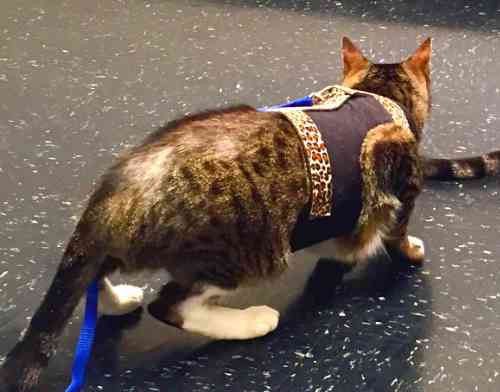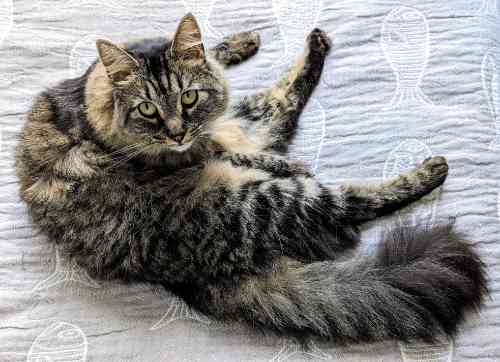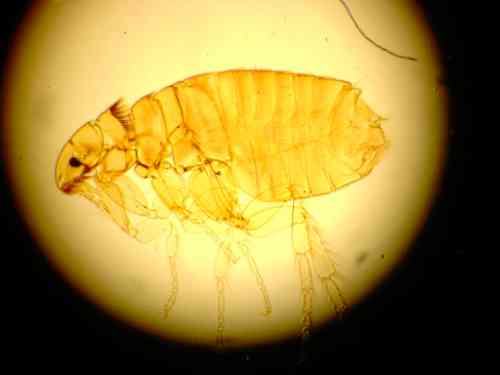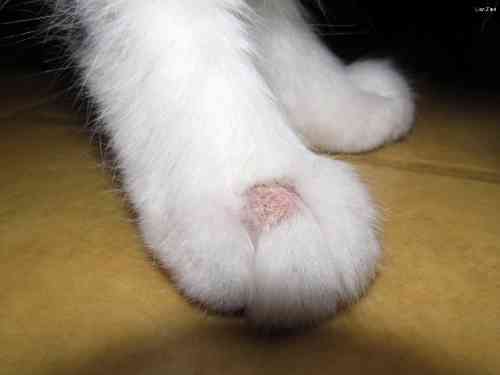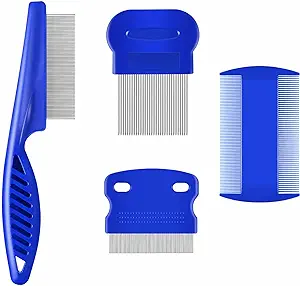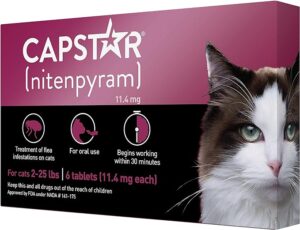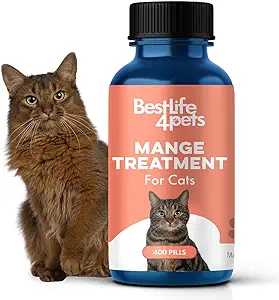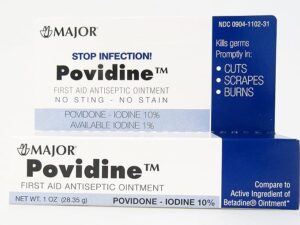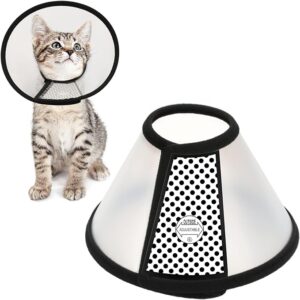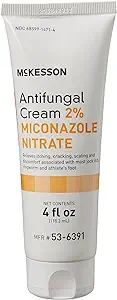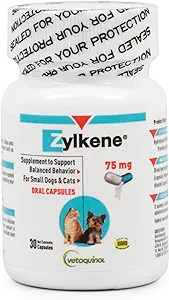Why is my cats tail losing hair?
Best ways to treat it
Why your cat’s tail is losing hair can have several causes. In this article we explain to you which symptoms you will see for which cause and what you can do about it and with what means to heal your cat’s hairless tail. You will certainly find a solution that is suitable for your cat. After the treatment he will soon have a beautiful and full tail again.
How do you recognise losing hair on the tail of your cat?
When your cat’s tail is losing hair, there might be a bald spot visible, you’ll understand that. And this hair loss can occur because hairs break off or because the hairs no longer grow back. In the vast majority of cases, the cause is that the hair breaks off. Because they have become less strong due to a certain cause, or because your cat keeps licking his tail and damages the hair with his tongue. Only occasionally do we see a cat that no longer grows hair on its tail.
When the fur on your cat’s tail becomes (much) thinner, all that is left is a pitifully thin tail. In that case, there is also hair loss on your cat’s tail, although there is often no real bald spot visible. But it doesn’t make much difference. If your cat really has bald spots, you can see his skin where the losing hair is worst.
Causes of losing hair on the tail of your cat
There are several possible causes that can lead to losing hair on the tail in your cat. For example, there may be parasites such as fleas or mites. But an allergy can also cause losing hair on the tail of your cat. For example, a flea allergy, food allergy or allergy to environmental substances in the air. We call the latter an atopy. But a skin fungus or stress can also cause hair loss on your cat’s tail. In addition, a bacterial skin infection can also cause the hair to fall out and not grow back properly. Below we discuss these causes in more detail.
Parasites
When we talk about parasites that cause losing the hair on your cat’s tail, we are mainly talking about fleas and mites. The fleas cause itching, causing your cat to lick or even bite its tail excessively, resulting in baldness. There are several types of mites. One type mainly causes itching and causes losing hair as a result of excessive licking by your cat. The other species digs tunnels in the skin or “lives” in the hair follicles. They destroy the hair and hair follicles, causing your cat to lose hair.
Allergic reactions
In general, allergies cause symptoms anywhere on the body. The symptom can be “just” itching, but we also often see skin inflammation develop. Both will cause the hairs to disappear and a bald spot to appear.
- If the hair loss is mainly on the base of the tail or more on the back of your cat, then there is almost always an allergic reaction to flea saliva. In other words: a flea allergy. This is different from “just” having fleas. Most of the times you don’t even see fleas on your cat.
- In addition to a flea allergy, we also often see an allergic reaction to food that can cause your cat to lose hair on his body In this case there is an allergic reaction to an ingredient in the food. For example, an allergic reacton to beef or an allergic reaction to wheat, etc. We usually see this allergy develop around the age of 1 to 1.5 years, or after an owner has changed his cats diet.
- In the case of atopy, there is an allergic reaction to substances that your cat inhales. For example, tree pollen, grass pollen, house dust mites, etc. This allergic reaction then causes itching or skin inflammation, resulting in losing hair. Often in different places on the body, but sometimes only on your cat’s tail.
Fungal infections or Ringworm
In many cases, a bald tail on your cat is also caused by a skin fungus. This fungus is microscopic and likes to grow in the hair and in the top layer of the skin. Because the hairs become brittle, they break off easily, resulting in a bald spot on your cat’s tail. They also often cause a red, circular, crusty skin lesion in the shape of a circle or ring. Hence the name Ringworm. A skin fungus can also be contagious to people and other animals in the house. Children, seniors, pregnant women and people with an immune disorder are particularly susceptible to it.
Stress
Most cats that are stressed will wash themselves excessively. They do this because this behavior has a calming and relaxing effect on them. The disadvantage of excessive washing is that their hair breaks off due to their rough tongue. In general, the losing hair on his tail due to stress mainly appear on their stomach and legs, but occasionally a cat mainly indulges in their tail.
Skin infection
If there is a skin infection, a normal skin bacteria may have settled in a wound of the skin. This causes the skin to become damaged more and the hairs to fall out. When this happens, your cat usually suffers from it quite a lot and licks it a lot. In that case, the skin also looks very wet, even if your cat has not been able to lick it for a while.
How do you treat your cat when he is losing hair on his tail?
It is of course very nice that we have listed the possible causes for you, but how do you actually treat your cat while losing his hair? How do you proceed if you have no idea what the cause of your cat’s hair loss on his tail is? We will help you with that!
Examine the hair losing tail of your cat
Do you see fleas or flea droppings in your cat’s coat (fleas or flea allergy)? Is the skin in the area where is he losing hair normal in appearance or does it look red and crusty (ringworm)? Or is the skin red and wet (bacterial dermatitis)? In other words: see if you can find clues that increase the likelihood of a certain cause. In that case you of course deal specifically with that problem.
Parasitic treatment
Do you actually have no idea what the cause could be? Then it is important to start with a parasite treatment. It is best to pick up a product at your vet’s counter that works against fleas and mites. For example, you can use Stronghold, Bravecto or Advocate for cats. But you can also use a product for fleas together with a product agains mites.
These products kill fleas and mites within 24-48 hours, after which healing of the skin can occur and the itching stops. Usually after a week you will see that longer stubble becomes visible because the hair grows back.
Treating bacterial skin inflammation
Is the skin on the bald spot on your cat’s tail a little wet? Then it is wise to apply iodine ointment to the bald spot twice a day for 5-7 days. The bacteria can in that case no longer multiply, allowing the skin infection to heal. However, make sure that your cat does not lick the iodine, otherwise he may develop diarrhea. In this case, the use of a protective collar is wise.
Treating fungal infection of the skin (ringworm)
If you notice somewhat flaky red skin in case of losing hair on your cat’s tail, it is wise to try an anti-fungal cream. A miconazole-nitrate cream is most suitable for this. You should apply this ointment to the bald spot on your cat’s tail twice a day. Usually, after about 2-3 days you will see that the skin becomes less red and fewer flakes appear. After 7 days at the latest you should clearly see that it is working. If this is not the case, there is no point in continuing with the ointment. If it does work, you should continue to apply the ointment for a week longer after you see that the skin has completely healed. This can sometimes involve treatment for up to a month or even longer.
However, there is a chance that you will also see your cat to start losing hair on other parts of your cat’s body. In that case, it is better to visit your vet so that he or she can prescribe an oral fluid against skin fungus for your cat. However, they do not prescribe this without fungal culture.
Preventing allergic reactions
Flea allergy
If you have carried out the treatment against parasites, you have also immediately started treatment against a flea allergy. This therefore does not need to be treated additionally in any other way.
Food allergy
However, treating a food allergy is more complicated. Your cat should not ingest anything other than Royal Canin Ultamino for 8 weeks (test-period). Yes, that food is expensive. But it is the best food for a food allergy test available. All other foods that say they are suitable for a food allergy often contain certain ingredients that your cat may be allergic to. The Ultamino diet doesn’t. You want the very best for the test period, otherwise you’ll still have doubts afterwards.
Your cat is not allowed to eat anything other than this food during these 8 weeks. So no sweets or slices of cheese or meat from your own refrigerator! After all, you don’t know whether he has a food allergy and what it is for. That could also be for cheese, for example. Step 1 is to know whether or not it is caused by something he eats. Later you can try to figure out for what he exactly is allergic to.
During the test you will probably not see any results for the first 4 weeks. It takes 3-4 weeks for all the old nutrients to disappear from your cat’s body. After 4 weeks you can start to see results if there is a food allergy. In that case, you will see that some stubble will become visible again on the bald spot. Is there no change visible after 8 weeks? Then there is no food allergy.
If results are visible, you can then either switch back to the old diet to see if he develops complaints again. However, you can also try the slightly cheaper allergy foods if you want. but leaving him on the Ultamino diet for the rest of his life is no problem at all.
Atopy or environmental allergy
At last, we have allergies to environmental substances. Unfortunately, this can’t be determined yourself. It is best to go to your vet and have some blood taken from your cat for an atopy examination. If there is an atopy, your vet will then tell you what treatment options are available.
Treat stress
If your cat is a stress-sensitive type, you should try to remove the source of the stress as much as possible. However, in most cases the source of the stress is unknown. In that case, it is best to give your cat Zylkène or the Calm diet. Both contain substances that ensure that more serotonin can be produced in the brain. With a higher Serotonin level in its brain, your cat is less sensitive to stress and depression.
When should you take your cat to the vet if he is losing hair on his tail?
Does your cat have a lot of trouble or irritation from the bald spot on his tail? Or is your cat losing his hair very fast? Then it is better not to continue treating yourself for too long. After all, a vet may prescribe more powerful medication than you can obtain yourself. And in some cases this is a better choice.
Also if your cat does not seem to be feeling well in general or he does not want to eat well, it is better not to wait too long. In that case, it is better to go to a vet immediately.
Good luck treating your cat’s hair losing trail!
Hopefully the above advice will help your cat to get a nice full tail again. Good luck!

